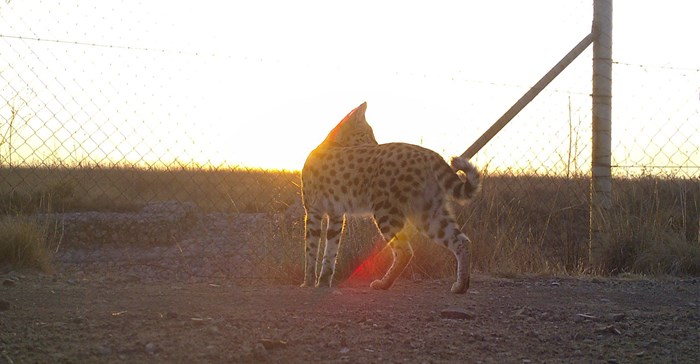
Subscribe & Follow
#AfricaMonth
Jobs
- External Sales Representative - Exports Vereeniging
In the news
Conservation and biodiversity - the upside of mine rehabilitation

Isibonelo is home to a surprisingly large number of species, including otter, water mongoose, bush pig, porcupine, spotted genet, common duiker and even the Red-listed brown hyena (Parahyaena brunnea). Serval, a mid-sized wild cat species, is particularly abundant on rehabilitated land in the area.
Together with the African Institute for Conservation Ecology and Genetics, the mine has embarked on a five-year research project that will see wildcat and wetland specialists investigate the persistence of this species in modified landscapes.
The study will include an estimation of the site’s serval population size, feeding ecology and behavioural adaptations. Activity is monitored by remotely activated cameras and GPS collars, and to date 148 individual servals have been identified on the mine’s 2,000ha site – a fairly high density for the species, says Roze Reiners a rehabilitation superintendent at Anglo American Coal SA.
Unique environments
The study, to be registered as a project with the Mpumalanga Tourism and Parks Agency, will be overseen by Dr Lourens Swanepoel, a senior researcher at the University of Venda. Field work will be conducted by student ecologists, both from this university and the University of the Free State.
“While research and public perception generally focus on mining’s negative impacts on fauna and flora, scientists are starting to understand how unused and rehabilitated landscapes can create unique environments that have an important role to play in conservation,” says Reiners.
Monitoring is initially being conducted on selected portions of mine property, to be followed by a broad-spectrum study over a 75km radius to comparatively measure the impacts of mining and agriculture on the species. The process of DNA testing to check the bloodlines of the population will start in July.
Reiners says the high population of serval points to the presence of a sustainable food source for the species. Serval primarily feed on rats and mice – and do not pose a threat to livestock, as many farmers mistakenly believe. “The value of modified industrial landscapes is slowly emerging as a theme in academic and conservation circles. We believe that this study will greatly improve our knowledge on the conservation value of modified industrial landscapes for various species and that these should be considered in future conservation planning."
Related
Environmental approvals get digital boost with new screening tool 22 Apr 2025 Using proven approaches to rehabilitate legacy mines 17 Apr 2025 Compliance not enough, environmental regulations must be surpassed 27 Mar 2025 Rooibos farmers unite agriculture, conservation for biodiversity 18 Feb 2025 Industrial scale farming is flawed: What ecologically-friendly farming practices could look like in Africa 24 Jan 2025 Emira’s biodiversity project creates a brighter future for Gauteng, sustaining nature’s workforce 17 Sep 2024











